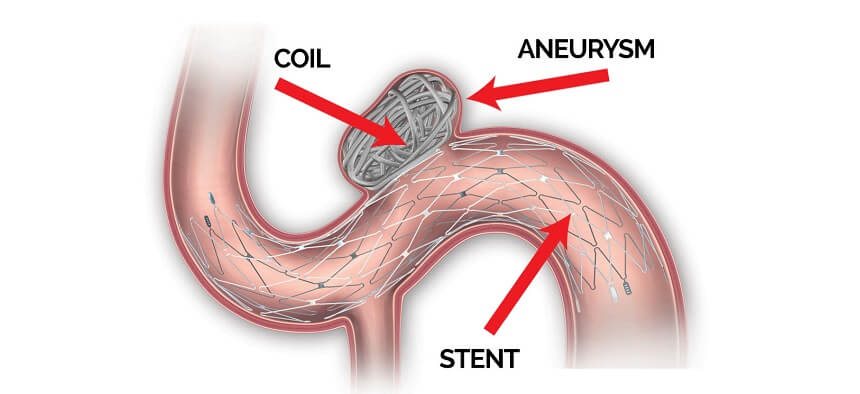
An aneurysm is a weak area in the wall of an artery which leads to a balloon or pouch formation. The wall of the pouch is thinner than the rest of the artery wall and is at risk of breaking. This type of aneurysm is known as a berry aneurysm, or saccular aneurysm, based on the way it appears. If the aneurysm breaks, then there can be bleeding in the brain. Other types of aneurysms include lateral aneurysm, where a bulge appears along one wall of the artery, or fusiform aneurysm, when the entire artery is enlarged. The specific cause why aneurysms form is unknown. Aneurysms can be hereditary (run in families) or occur due to an abnormality which occurred during gestation. Some diseases can lead to weakness in artery walls and formation of aneurysms; these include polycystic kidney disease, some of the connective tissue disorders, or vascular malformations. Trauma, high blood pressure, or drug use may also increase the risk of developing aneurysm. In rare cases, infection within the wall of the artery can cause an aneurysm to form.
What is endovascular coiling?
Endovascular coiling is a way to treat aneurysms without opening the skull or performing brain surgery. The coil refers to a thin wire which is bunched up (coiled) within the aneurysm. The coil prevents further blood flow into the aneurysm by causing a clot to form, while the rest of the artery remains open to transport blood to the brain. The wire is inserted through a catheter which is fed through the large arteries of the body and into the arteries of the brain. This procedure is done as an alternative to aneurysm clipping (surgically isolating the aneurysm by placing a clip at the base of the aneurysm to keep blood from entering), which requires brain surgery. to isolate the area of the aneurysm.